
The historical and Cultural Center "Ship Resurrection" is a museum complex located in the Friedrichsburg Gate and on the adjacent territory in the city of Kaliningrad.
Friedrichsburg Fortress (later fort, now restored Friedrichsburg Gate with museum exhibits) is a fortress that existed in Konigsberg (now Kaliningrad) and was part of the defensive fortifications of the city.
Now the remains of the Friedrichsburg Fortress are more like a small castle, are an architectural monument of Federal significance, are subject to state protection and, in addition to the museum, act as one of the venues for mass celebrations and historical reconstructions. Learn more about the Friedrichsburg Gate in Kaliningrad...
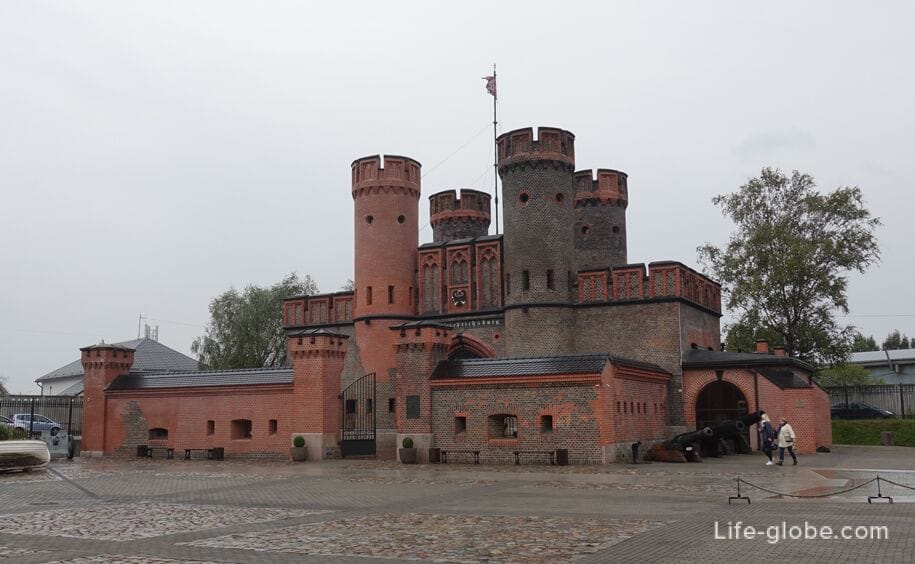
The museum complex "Ship Sunday" was created as part of the program of the World Ocean Museum for the preservation and popularization of the maritime heritage of Russia and is dedicated to the history of shipbuilding and the revival of historical ships, includes two small complexes: the Friedrichsburg Gate and the Lodeyny Yard, located on the adjacent territory.
Visiting the museum complex of the Friedrichsburg Gate, you can not only get acquainted with the history of shipbuilding, but also touch the history of Konigsberg and Kaliningrad.
This museum complex is located directly in the Friedrichsburg Gate, consists of several halls, the exhibits of which tell about the history of ship building. Part of the museum's collection is dedicated to the role of Peter the Great in the formation of the Russian Navy.
Also in the museum you can watch several films dedicated to the life and work of Peter, related to shipbuilding and navigation, including the creation of a fleet in Russia and the opening of a navigation school in Moscow in connection with this.
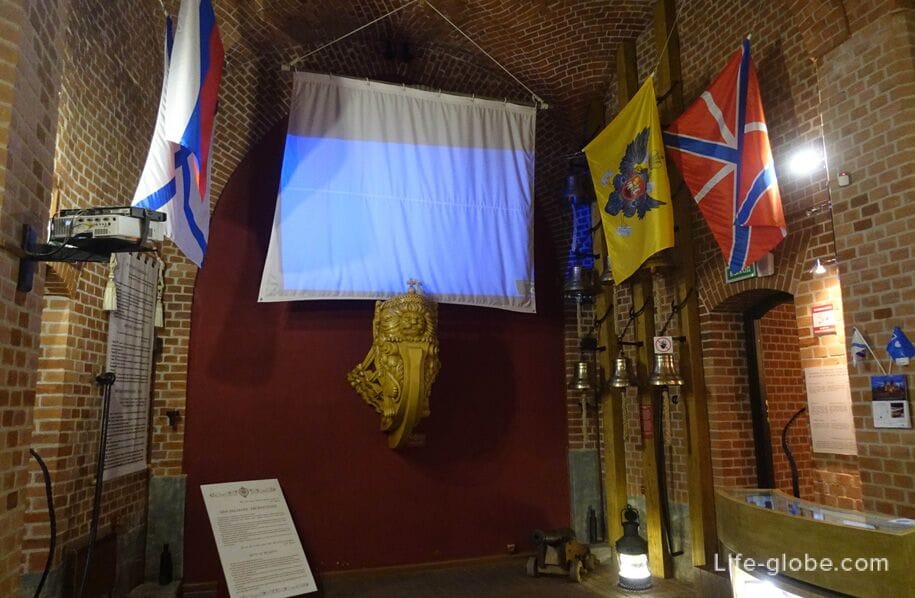
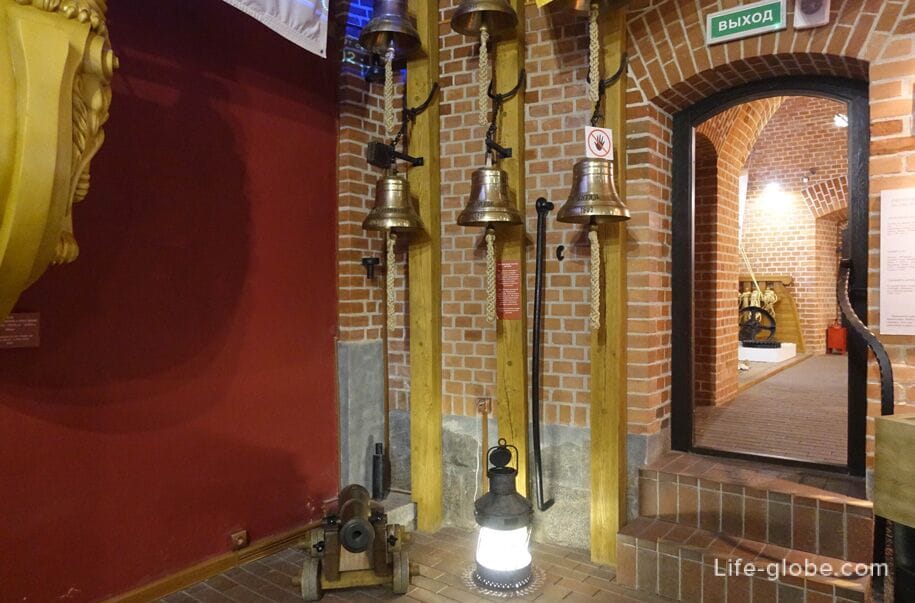
"What our ancestors sailed on"
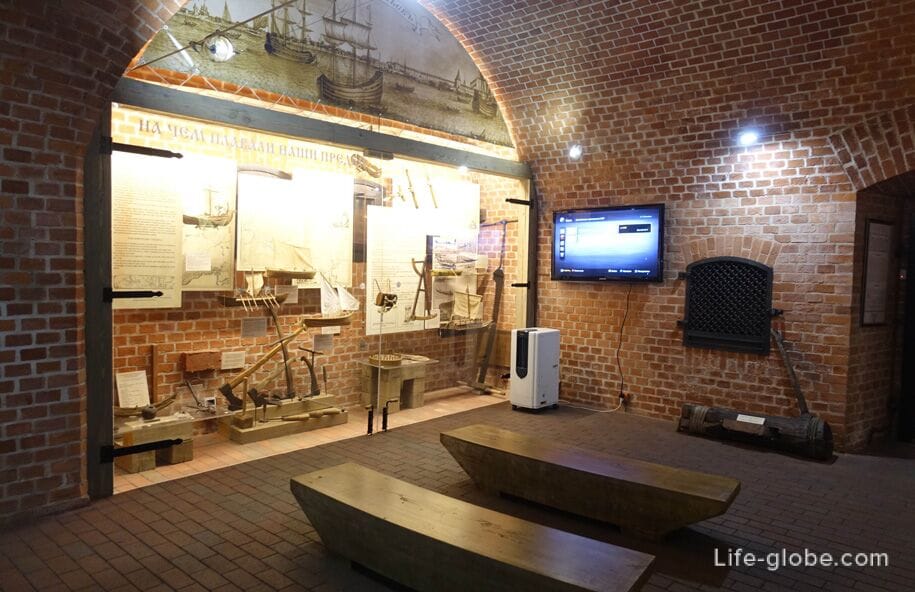
Exhibit birch bark canoe of the North American Indians of the Atikamek tribe living in the valley of the St. Mauritius River; Quebec; Canada.
The seemingly unpretentious canoe had exceptional seaworthiness, as well as incredible ease, controllability and speed of movement, which, combined with the strength of the structure, made it possible to move through shallow waters and rapids of the rivers of northwestern Canada.
The canoe was used by Hudson's Bay Company trappers until the early 20th century.

Seaworthy tools:
- wind meter - wooden compass, for approximate, in points, indicating directions to the sea, was used from the 15th to the 18th centuries;
- Pomor compass - magnetic pocket compass, for approximate, in points, directions to the sea;
- gradstock - a wooden astronomical angle measuring instrument for measuring the position (of the sun, moon or stars), used from the 15th to the 18th centuries;
- manual lot - a device for measuring depths from the side of the vessel, it is still used today;
- The Nocturnal star clock is a wooden astronomical angular instrument for determining the night time by the relative position of the Polar Star and the stars of the constellation Ursa Major;
- The Davis quandrant is a wooden astronomical angle-measuring instrument for measuring the heights of the luminaries, used from the 17th to the 18th centuries.
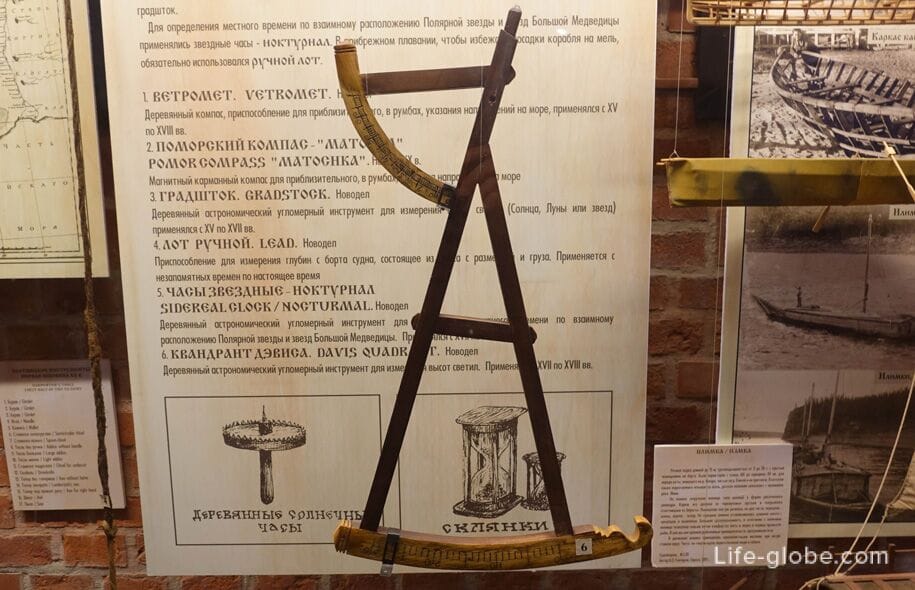

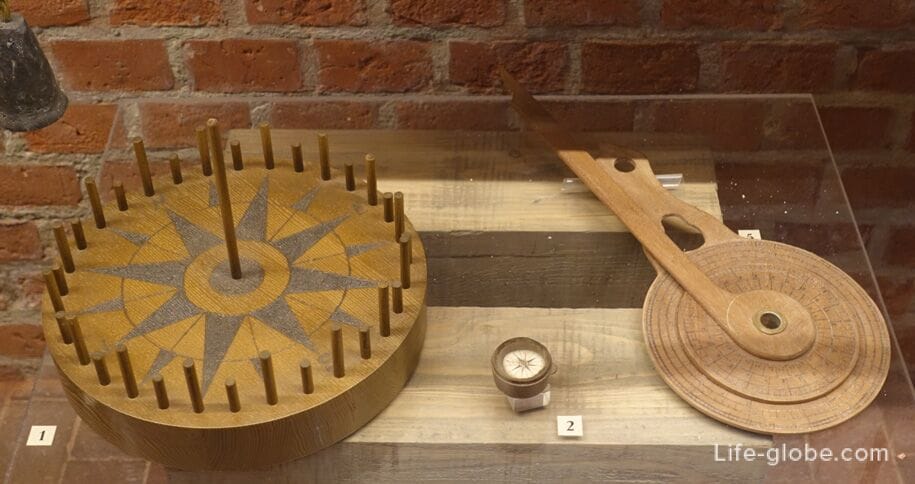
The Ilimka ship model is a river boat up to 15 meters long, with a load capacity from 2 to 20 tons with an indoor room on board. It was characteristic from the end of the 19th to the middle of the 20th centuries. In the Ket language, the ilimka boat is called asel, the Russian name is associated with the name of the Ilim River.
A hut-type dwelling in the form of a dissected cylinder was built on Ilimka. Its frame was made of bird cherry twigs and covered with birch bark panels. The room inside was divided into two parts: the front - housing, the back - warehouse.
A long mast with a trident and a pennant was installed in the middle of the ilimka. The large carrying capacity, combined with the presence of a dwelling, allowed the Ketov families to live comfortably in a boat during the fishing season.
The ilimka was driven by single-lane oars, a sail was set in the wind. Often it was pulled along the shore by people and dogs with the help of a string.
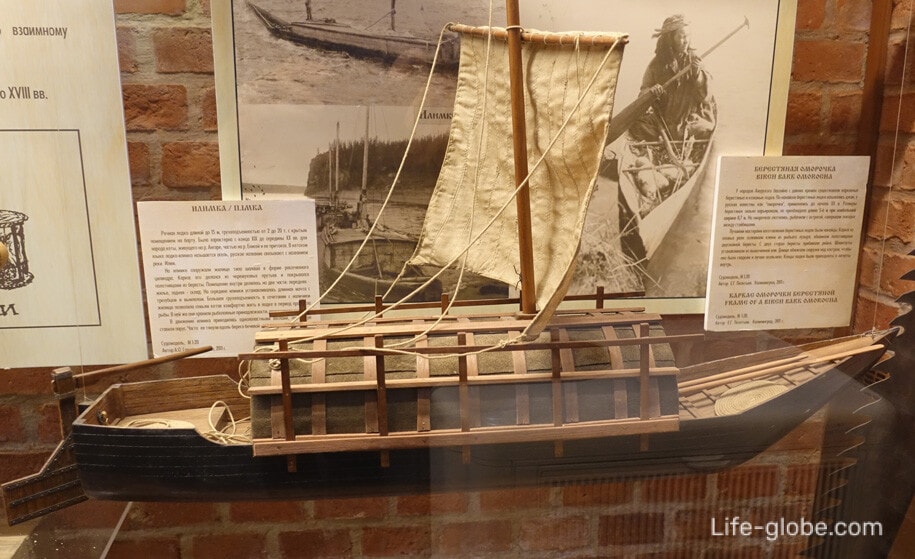
The Kayak model is a large transport and fishing frame boat of the Primorsky Chukchi, Koryaks and Eskimos (the Eskimos called anjapik, the Alaska Eskimos called umiak, the Russian name is kayak).
The frame of the kayak was assembled from whalebone (less often from wood) with elastic ties from belts and was covered with the skin of marine animals: walrus, seal. It is the oldest type of fishing boat among the peoples of the Bering Sea and is used to this day.
Kayaks are divided into small, medium and large. Small kayaks (one-, two-local; length 2-4 meters) - are used for the extraction of small seals. Medium-sized kayaks up to 8-10 meters long are used for hunting whales and walruses. Large kayaks reach a length of 20 meters, can accommodate up to 30 people and are used for transporting people and cargo.
The Kayak ship model is a single, double boat of the Aleuts, Eskimos, and Koryaks. Approximate dimensions: length up to 3 meters, width - 0.75 meters. It has been used since the 19th century to the present. It is used for hunting sea animals.
The Koryak kayak was slightly shorter and wider than the Eskimo-Aleut kayak. The man was placed in a leather hatch, the edges of which fit snugly to the clothes, creating tightness and allowing the boat to make a full turn under water.
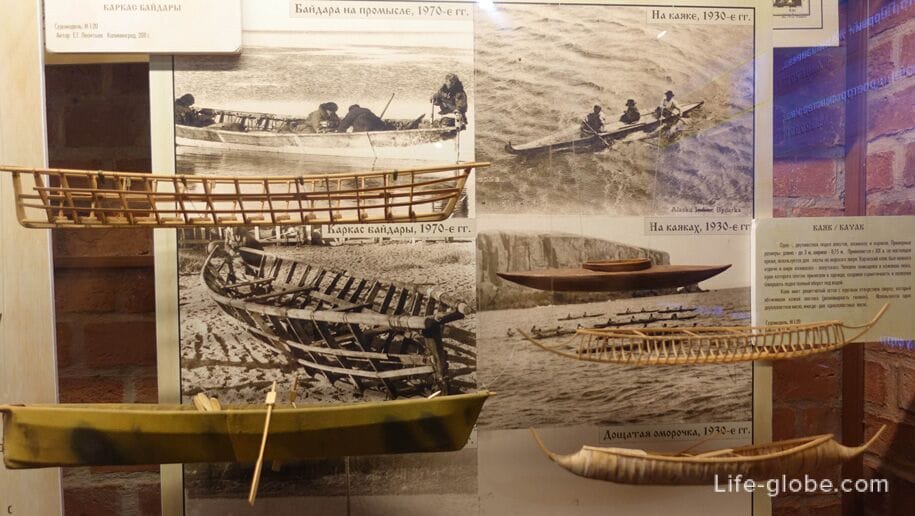
Ship models:
- the Cossack seagull is a deckless flat-bottomed boat of the Zaporozhye Cossacks of the 16th and 17th centuries, in the form of a huge hollowed-out deck, lined with boards along the sides. It was used during military campaigns against the Turks;
- soyma Ladoga is the combined name of sailing ships, the construction of which began in the 18th century on Ladoga and nearby lakes. They were used for fishing, transporting people and cargo;
- the Caspian river is a sailing and rowing fishing vessel of the Caspian Sea and the Volga Delta.
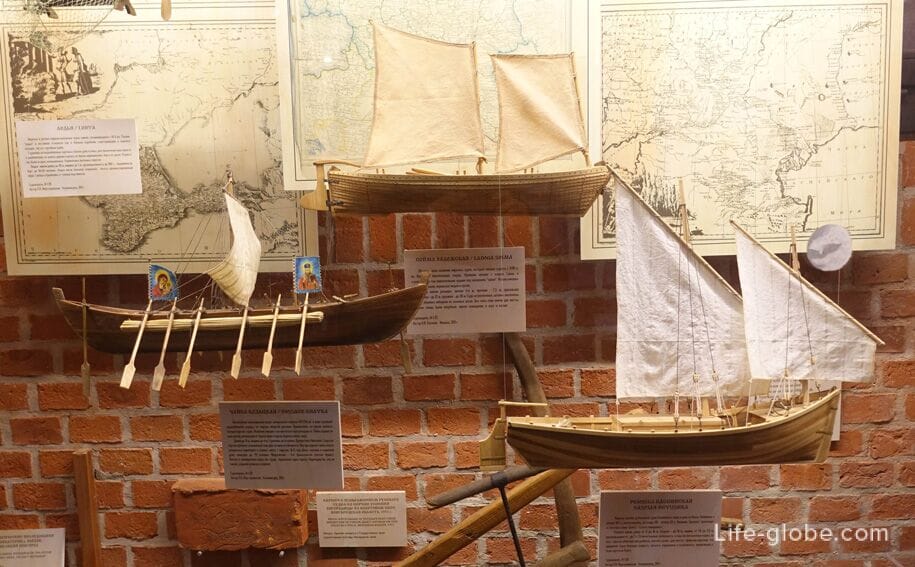
The ship model Lodya is a sea and river sailing and rowing vessel of the Slavs, mentioned since the 9th-10th centuries. The term "rook" in the annals refers to both warships that participated in military campaigns and merchant ships.
They were built from hollowed out large trunks of oak and linden. To increase the capacity, boards were built up on the sides of the hull hollowed out of solid wood. The stern and bow were sharp, elevated. They were controlled by oars and a sail. They had a length of up to 20 meters, a width of up to 5 meters, a load capacity of up to 200 tons, lifted up to 40-60 people on board.
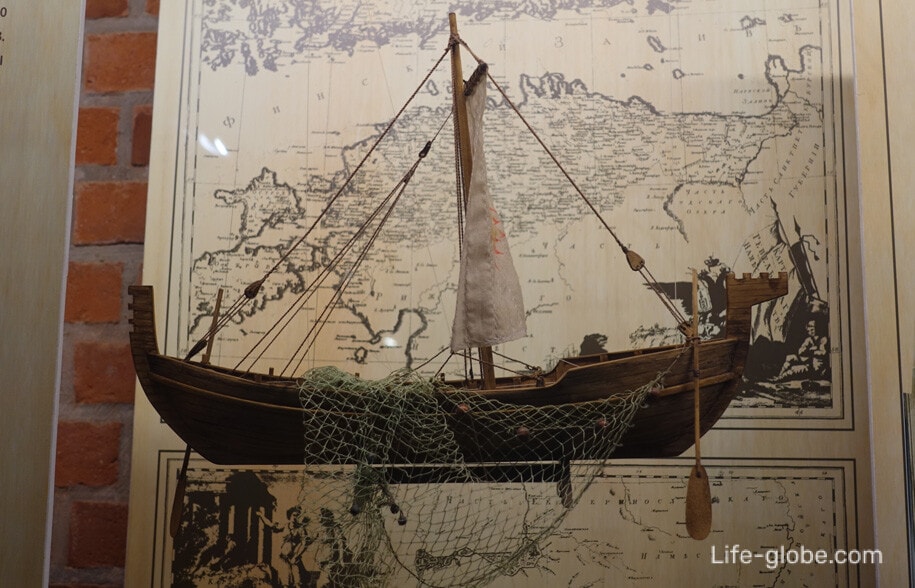
The Koch ship model (Kocha, Kochmora, kochmara) is a Pomeranian single-masted wooden sailing and rowing vessel of the 11th-19th centuries. On kochs they went from Kola (near modern Murmansk) to Grumant (Svalbard) and Novaya Zemlya.
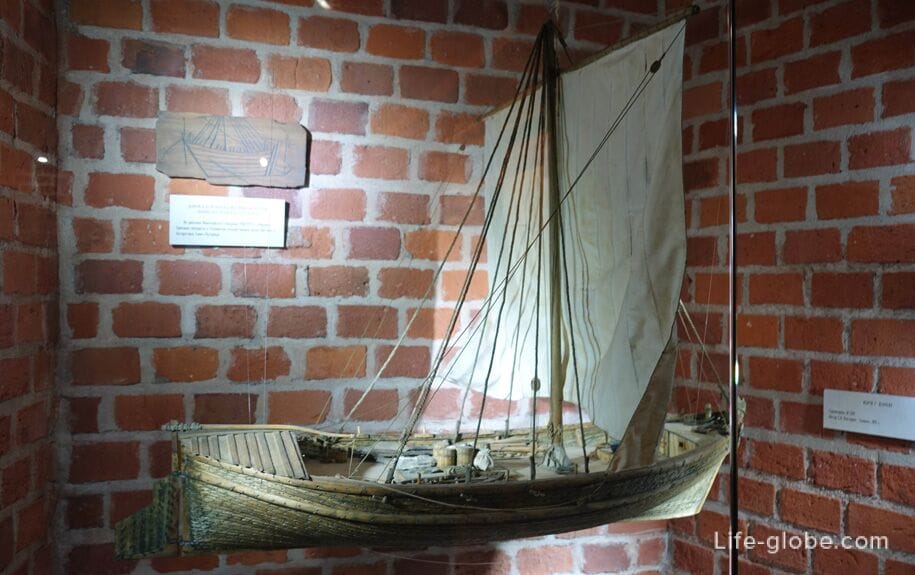
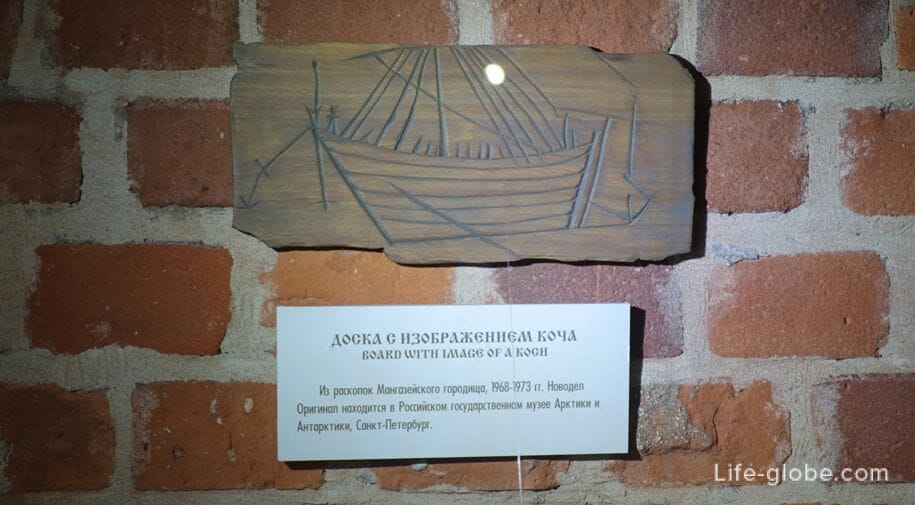
Ship model Frigate "Eagle" - the first Russian military sailing ship of the Western European type. It was built in 1667-1668 by decree of the Russian Tsar Alexei Mikhailovich to protect merchant shipping on the Volga and the Caspian Sea at shipyards in the village of Dedinovo, Kolomna County.
This is a type of marine two-deck three-masted sailing vessel (flute or small frigate) common in the Netherlands.
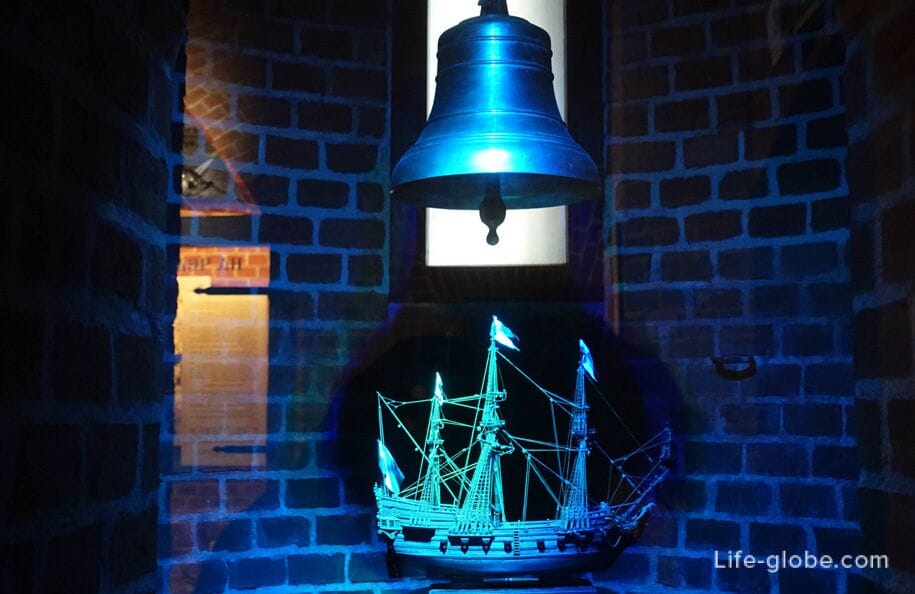
Finds from archaeological research:
- in the water area of the Volkhov River, Veliky Novgorod (2006, 2008);
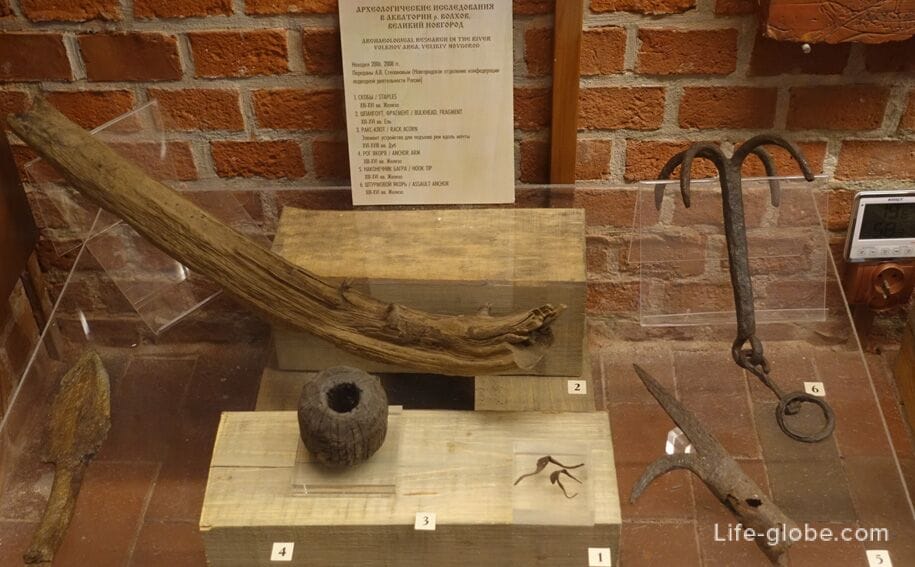
- in the settlement of Mangazeya, the first quarter of the 17th century (2006, 2009).
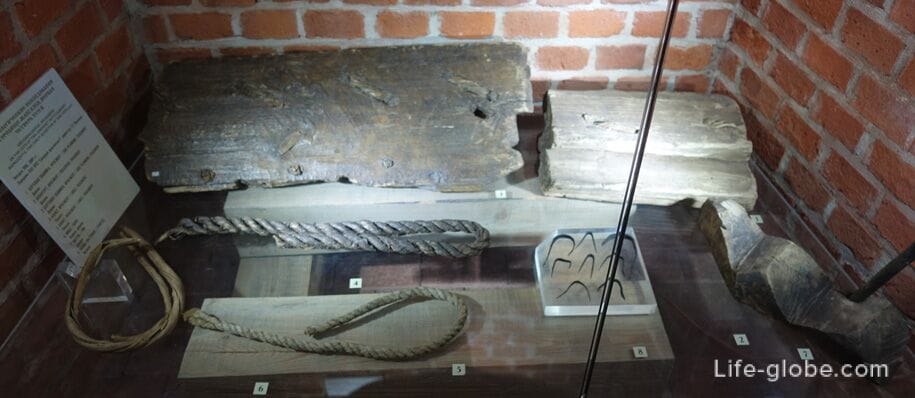
Sea anchor-dog 17th century.

It is dedicated to the era of Peter I, which was marked by large-scale geographical research, which gave a powerful impetus to the development of cartography.
"Protecting the fatherland of security from the enemy, it is necessary to try
Peter I
to find glory for the state through art and science."
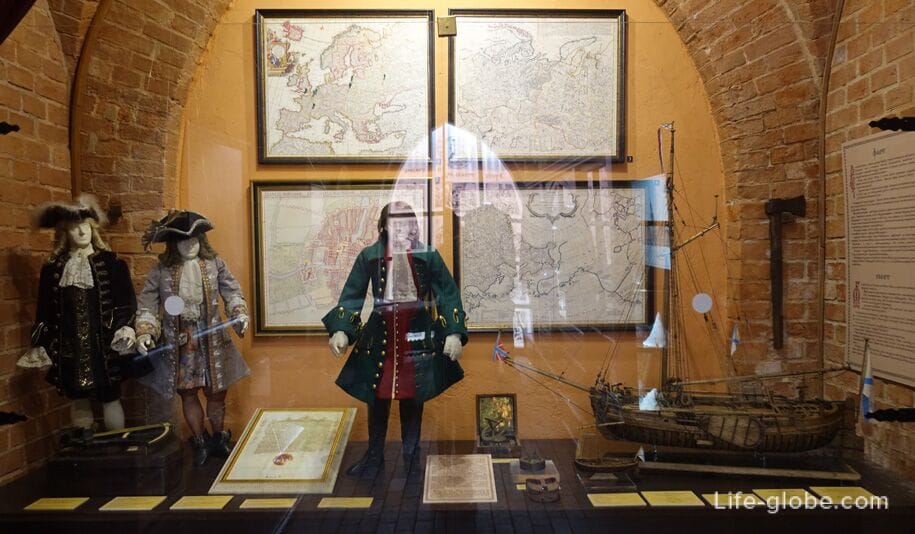
Peter the Great collected works of art: paintings, mostly of the Dutch school; "carved stones" - antique cameos created by contemporary masters; coins and medals; mechanisms and tools; Chinese curiosities and other interesting objects.
On December 31, 1714, Peter the Great ordered to move all his curiosities to the Kunstkamera - translated from German, this word means nothing more than "cabinet of curiosities".
The "rarities" of Peter I were quite extensive and diverse. He founded the first archaeological collection in Russia, the so-called "Siberian" collection. The core of the "naturalia cabinet" consisted of a collection bought by the tsar from the famous anatomist Frederick Ruysch, mainly demonstrating anomalies of the human body, and a collection of drugs from exotic fish, reptiles, insects and mammals purchased from the Dutch pharmacist Albert Seba.
Today, it is even difficult to imagine the impression that Peter's Kunstkammer made on its first visitors. Before the astonished eyes of Russian people, the secrets of nature were revealed, hidden in the bowels of the earth and the depths of the sea, in the myriad stars overhead, in the world of tiny creatures - insects and reptiles - and even in their own (human) body.

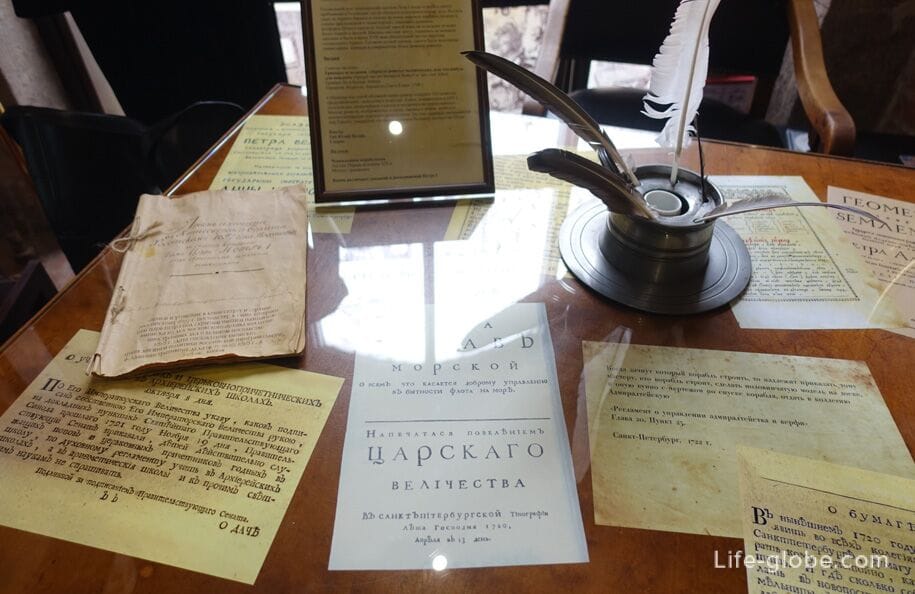
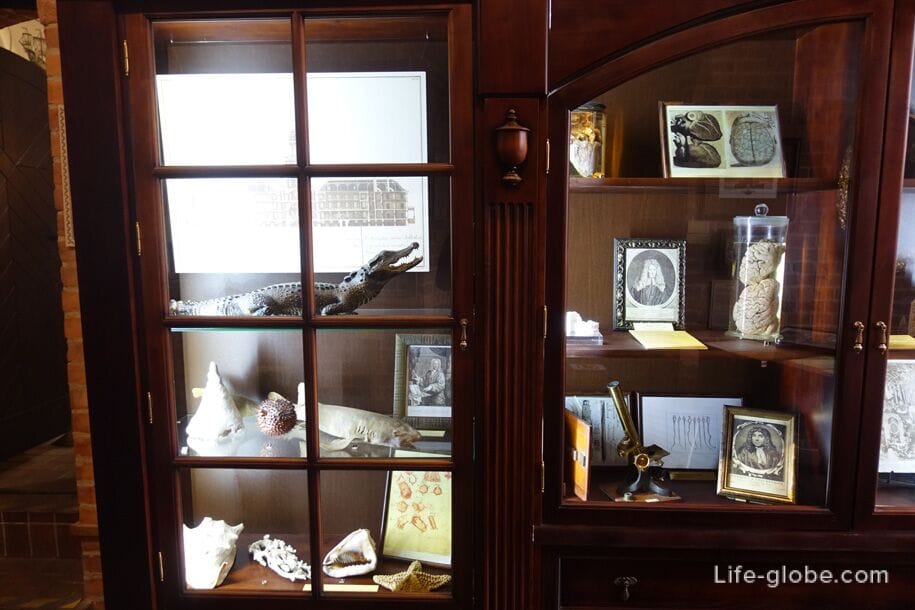

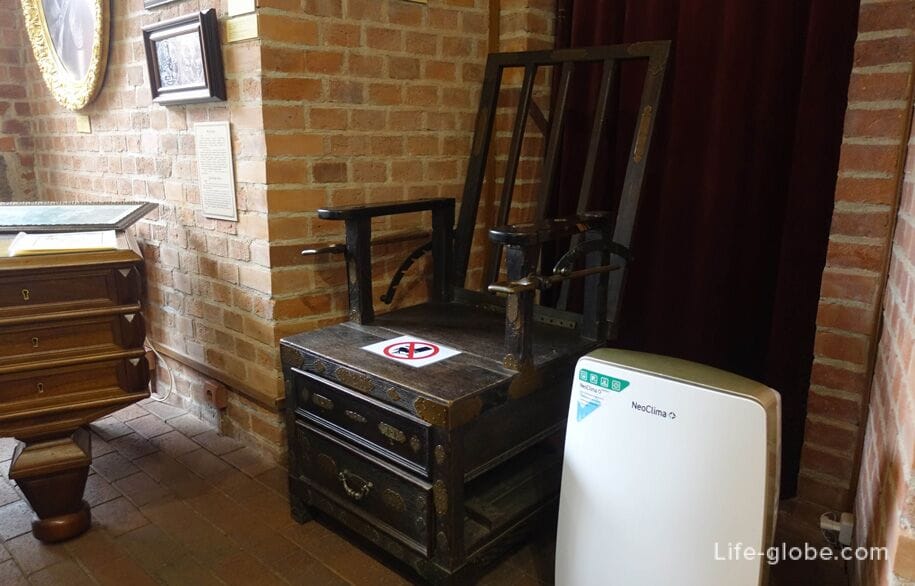

Peter I costume (caftan, trousers, boots), Holland, late 17th century (reconstruction).
Peter the Great wore a Dutch or "skipper" suit during his stay in Holland, where he studied shipbuilding.

Dedicated to the sailing fleet of Russia.
The sailing fleet of Russia developed rapidly during the reign of Peter the Great, who was a skilled shipwright. He participated in the design and construction of ships, studied the drawings of newly created ships, corrected them, corrected mistakes, constantly sought new methods of fast and high-quality construction.
Traveling around Europe as part of the Great Embassy, Peter I collected and studied books on shipbuilding and navigation. An important step was the creation in 1701 of the School of Mathematical and Navigation Sciences, formed in Moscow. The school trained cadres of officers of the navy and partly of the army. Attracting foreign teachers and shipwrights, Peter the Great in many ways went his own way, so different from the ideologies of his predecessors and contemporaries, while creating a domestic school of shipbuilding.
Ships of the Russian Navy of various classes were built at numerous shipyards throughout Russia. In total, 111 battleships, 38 frigates, 6 brigantines, 8 shnyavs, a significant number of scampways, bombardier ships, fire-ships, shmaks, prams, up to 300 transport and many small vessels were built.
Peter I had the idea of creating "two fleets": galley - for action together with the army in coastal areas and ship - for mostly independent actions at sea. In this regard, military science considers Peter I to be an unsurpassed expert for his time on the interaction of the army and navy.
The Russian Navy has played an important role in the life of the state. The first Russian victory at sea at Cape Gangut in the Baltic proved military power and knowledge of maritime affairs.
Peter the Great brought Russia out of hibernation, elevated it to the rank of maritime powers and, partly thanks to the navy, managed to "cut a window to Europe", which undoubtedly had a powerful impact on the further development of the empire.
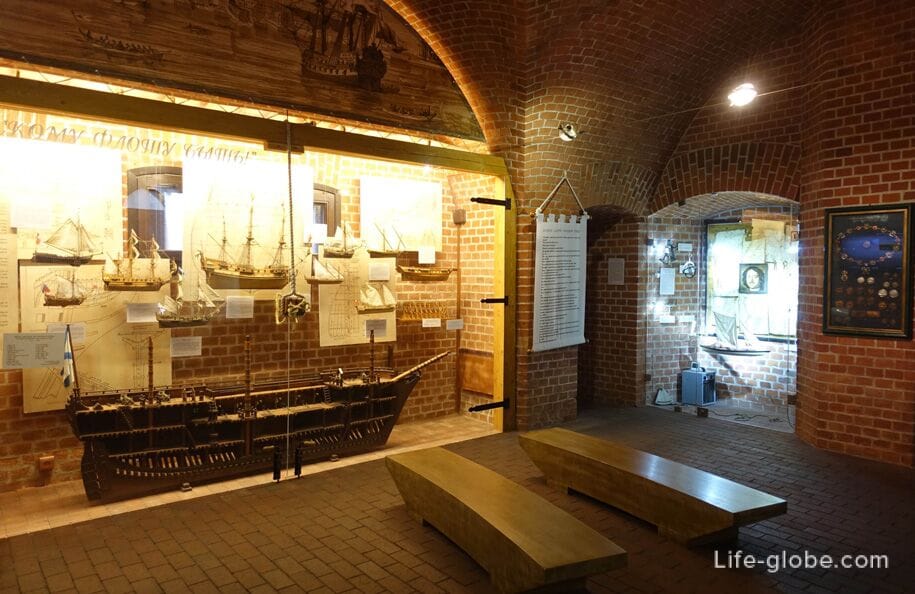
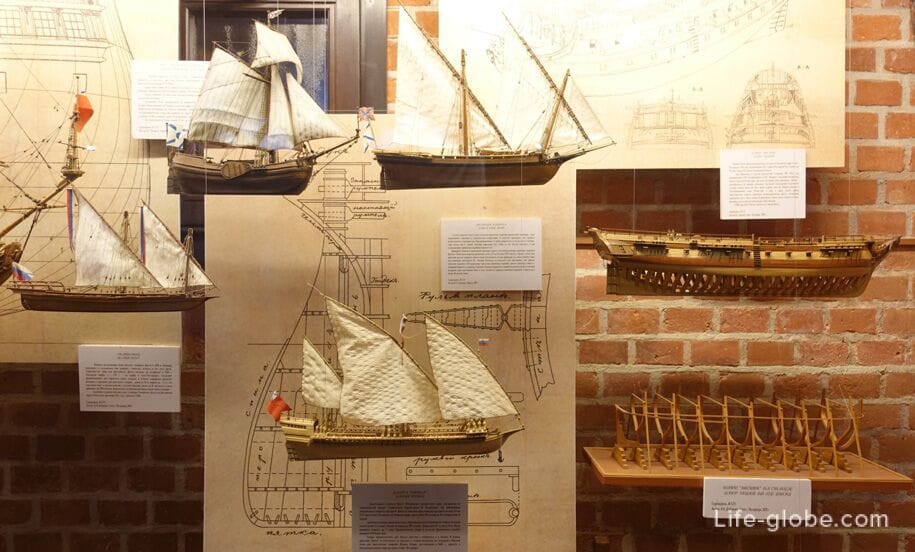

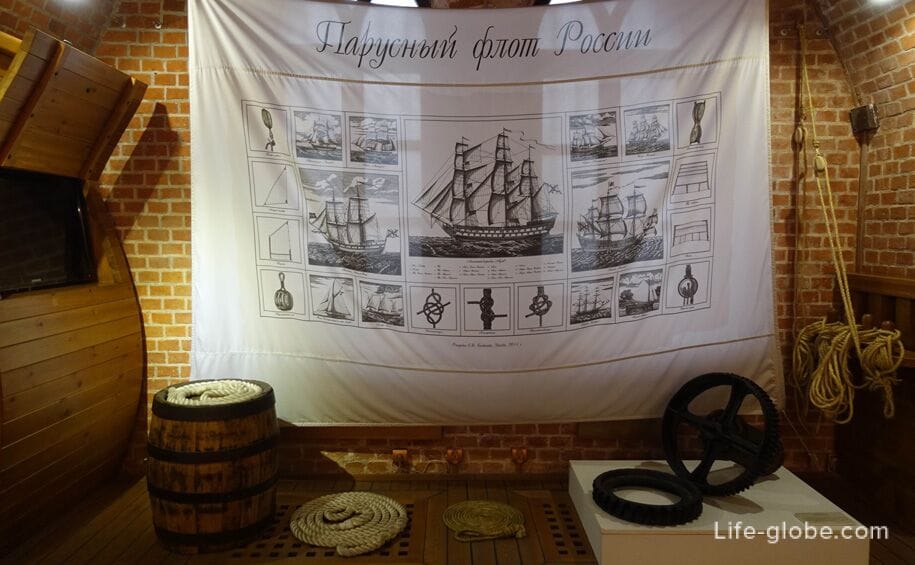
Longitudinal section of a Russian sailing vessel of the first half of the 19th century.
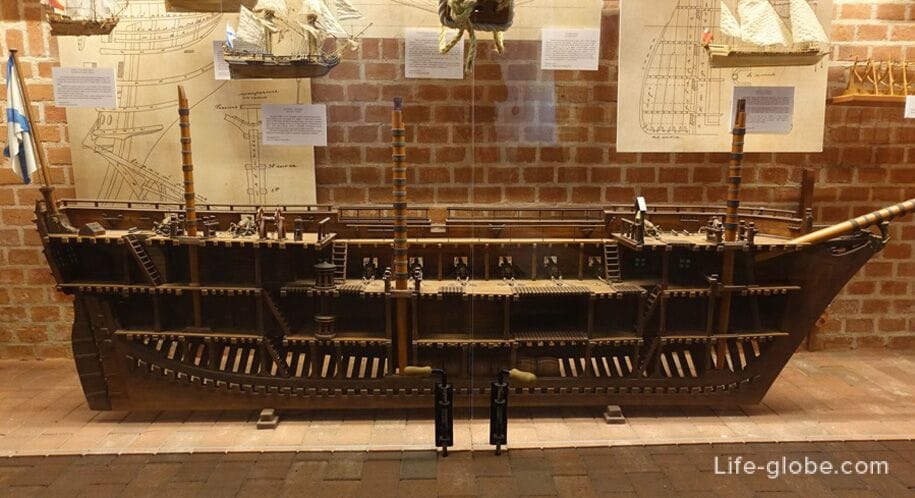
The ship model Battleship "Poltava" is the first battleship of the Baltic Fleet, built in St. Petersburg in 1712. Length of 40 meters, width of 12 meters, carrying capacity of 1,000 tons, armament of 54 guns.
"Poltava" actively participated in the Northern War of 1700-1721 and in 1713 went under the standard of Peter I.
The ship was built from a well-dried oak forest, which was not always observed during the rapid construction of the fleet. "Poltava" served for 20 years, which is much longer than many ships of her period.
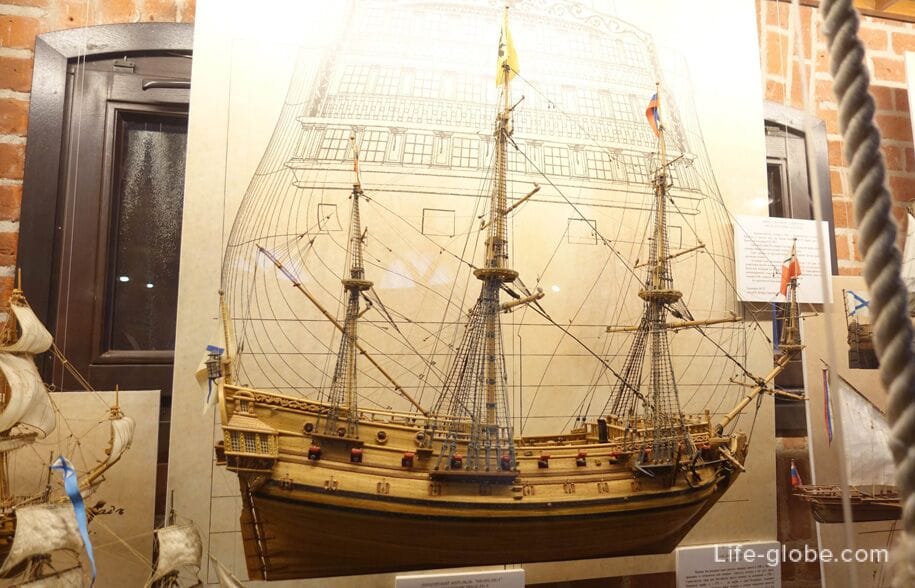
The ship model Sloop Vostok is a three-masted sailing sloop-of-war built at the Okhta Shipyard in St. Petersburg in 1818. Displacement of 985 tons, depth of 39 meters, width of 10 meters, speed up to 10 knots, crew of 117 people, armament of 16 guns.
The sloop was the flagship in the Russian circumnavigation expedition of 1819-1821 under the command of F.F. Bellinstausen and M.P. Lazarev who discovered Antarctica.
In 1828, the sloop Vostok was removed from the fleet list.

The Dvina Galley ship model is the only 50-oared three-masted vessel in the Russian fleet built according to the "Venetian manir". The ship received its name when launched on May 16, 1729 in St. Petersburg at the Galley Shipyard. It had a length of 48 meters, a width of 10 meters, armament of 15 guns.
The galleys were intended for combat operations off the coast and in skerries. The Dvina did not participate in combat operations, but every year for several years she went to the Gulf of Finland for practical voyages.
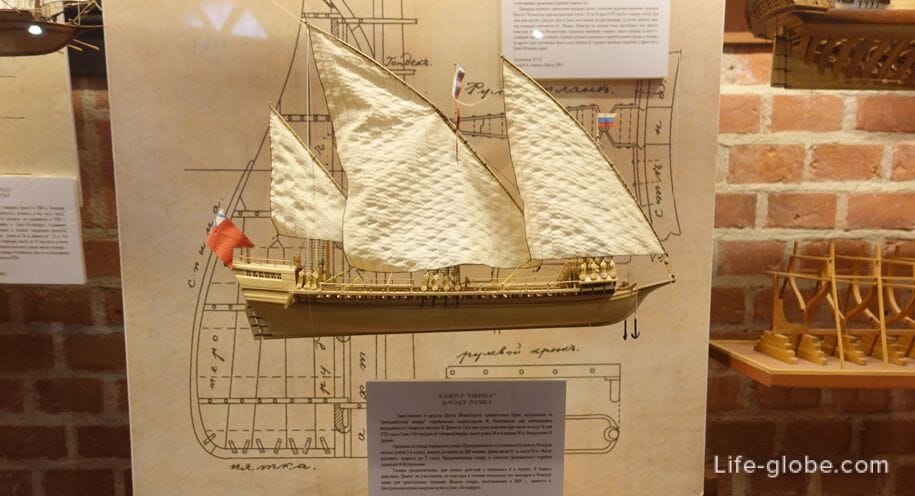
Ship Model Boat "Saint Gabriel" - a single-masted boat built in 1728 in Nizhnekamchatsk on the Kamchatka Peninsula from the local forest for the First Kamchatka Expedition of 1721-1730.
The vessel had a length of 18 meters, a width of 6 meters, a draft of 2 meters, a cargo hold, a crew forecastle, officers' cabins and a galley. The crew is 44 people.
The boat served in the Pacific for 27 years, until 1755.

The Peter I Boat model is a small oak deckless single-masted vessel, presumably made in England and delivered to Russia in the 1640s.
In May 1688, the boat was repaired, and the young tsar made voyages on it on the Yauza River and on the Millet Pond in Izmailovo. Then the boat was transported to Pleshcheyevo Lake, where the future emperor's serious passion for ship business and naval sciences began with sailing.
Peter I called the boat "the grandfather of the Russian fleet."

The ship "Goto Predestination" (translated as "God's Foreknowledge of this"), was laid down in November 1669 at the Voronezh shipyard, launched on April 27, 1700. The construction was carried out according to the project, drawings and in the personal presence of Peter I.
The length of the vessel is 36 meters, the width is 9.5 meters, the depth of the hold is 2.9 meters. There were twenty-six guns on the lower deck, 24 8-pounders on the upper deck and eight 3-pounders on the poop deck. The crew is 253 people.
"Goto Predestination" is not only the first 58-gun ship of domestic construction, but also an example of sculptural and decorative decoration, a work of art in the style of Peter the Great Baroque. The ship was part of the Azov Fleet until 1711.

The ship model Frigate "Shtandart" is a 2-gun three-masted frigate built in 1703 at the Olonets Shipyard in Lodeynoye Pole on the Svir River. Peter I personally took part in the construction of the "Standard".
The frigate's length was 27.5 meters, width 7.3 meters, average draft 2.7 meters. The crew is 120 people. Armament of 28 guns.
It was the first Russian warship in the Baltic Fleet. The name of the ship is symbolic: simultaneously with the laying of the ship, Peter I introduced a new flag - the royal standard, which is a double-headed eagle on a yellow background, holding in its paws and beaks four maps with the contours of the Caspian, White, Azov and Baltic Seas. This meant that after the capture of the fortress of Nienschants at the mouth of the Neva River, Russia received access to the fourth sea - the Baltic.
Under this flag and the command of Peter I, the ship crossed Lake Ladoga at the head of seven newly built vessels and anchored in the roadstead of the Shlisselburg fortress. Subsequently, the ship took an active part in the Northern War.
The frigate "Shtandart" has been in the Russian Navy for more than 25 years.
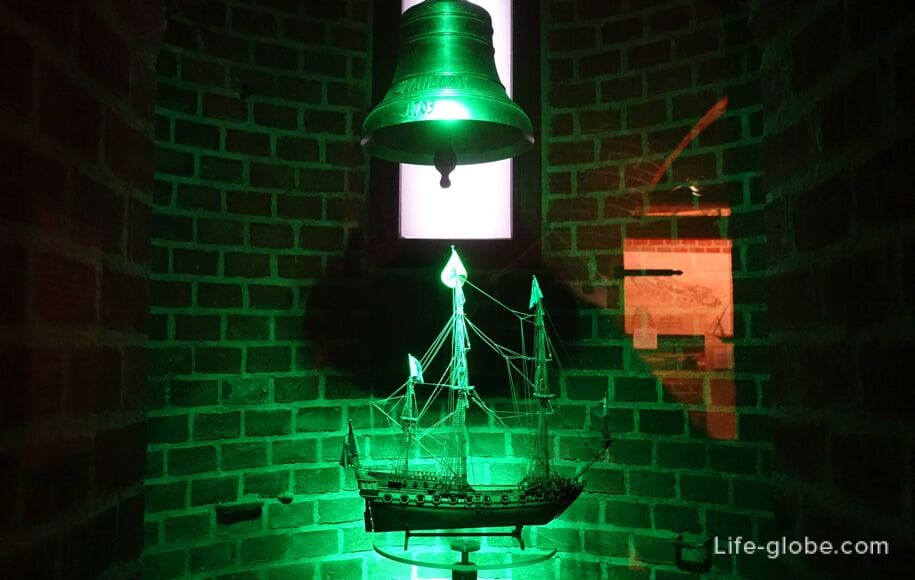
Portrait of Peter the Great, nautical instruments and navigation devices

Awards of the time of Peter the Great
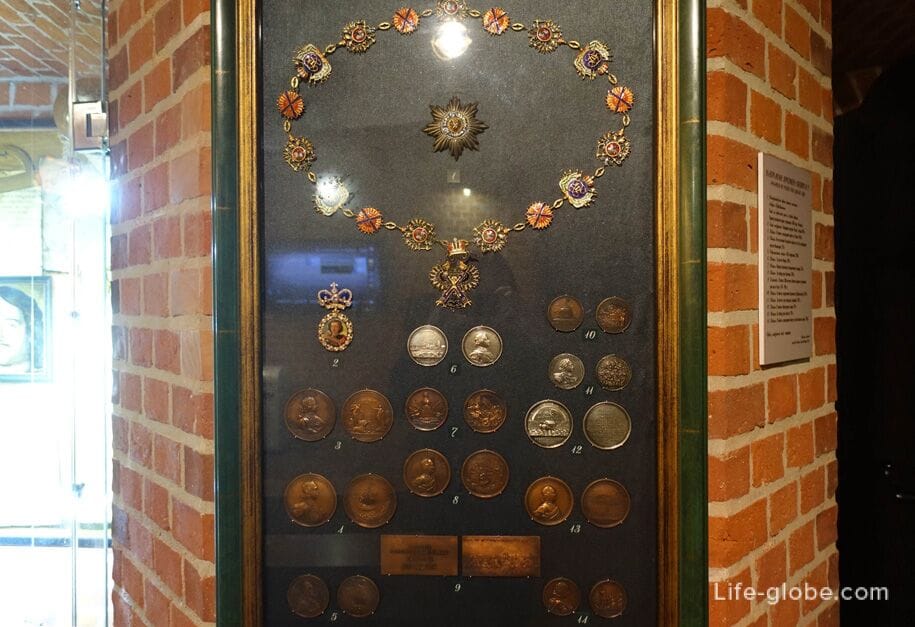
On the adjacent territory, near the Friedrichsburg Gate building, there is a second complex of the museum - the Lodeyny Dvor, the basis of which is made up of existing samples of traditional means of transportation on water collected in various regions of Russia. The collection of boats is constantly being updated.
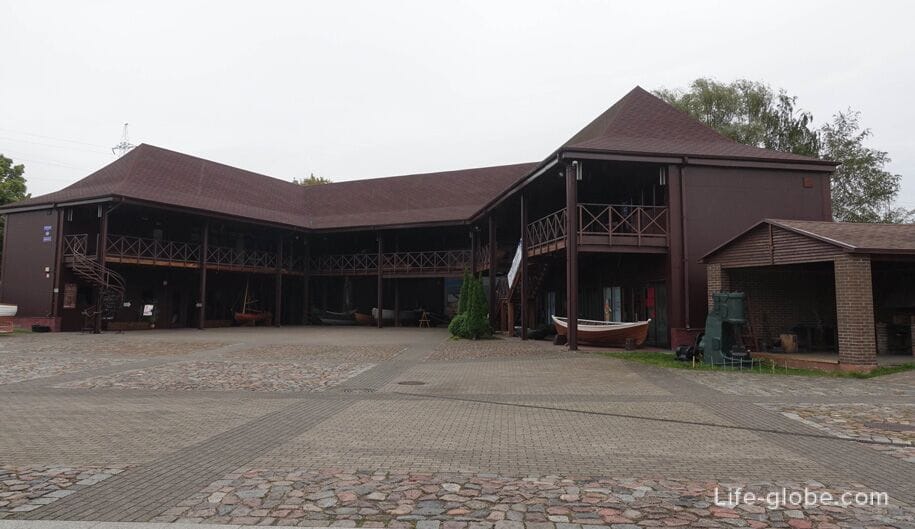
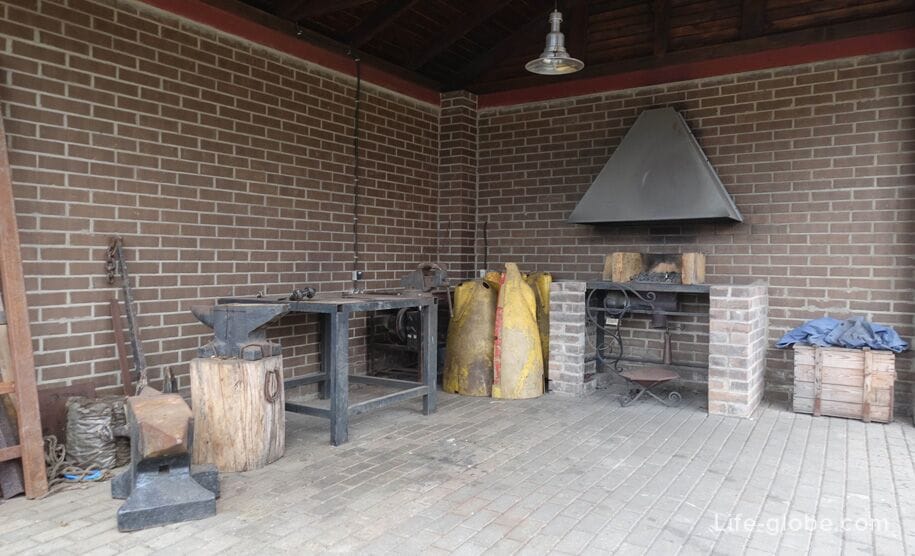
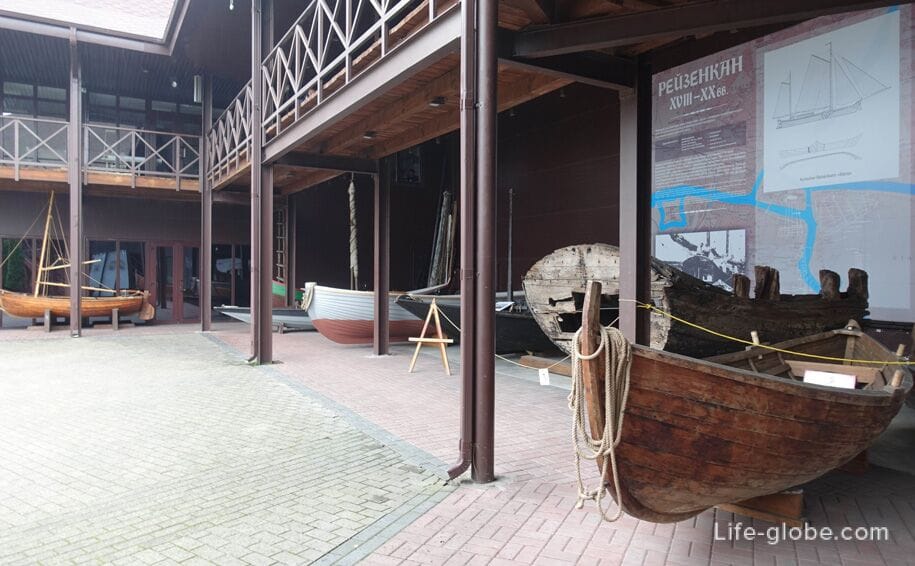
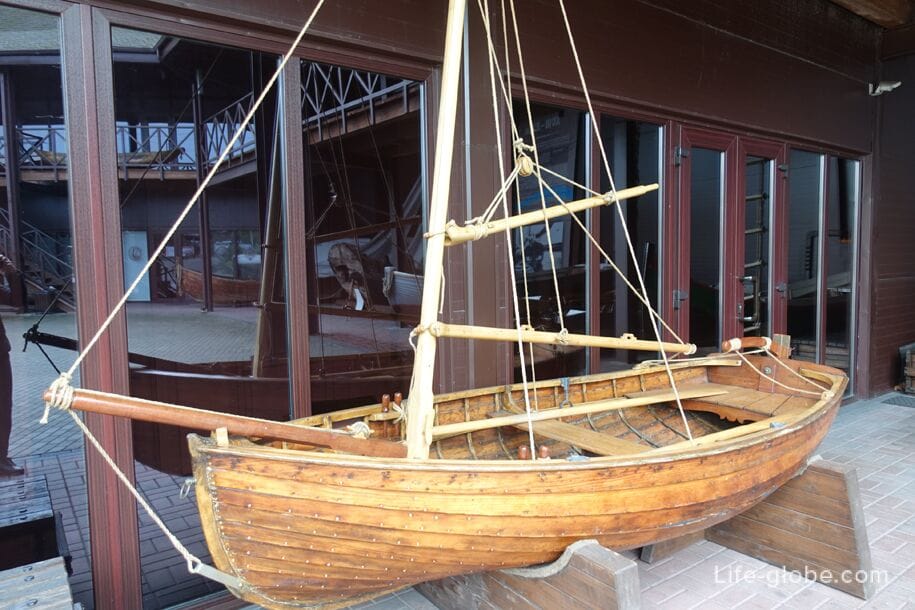
Pauzok (small Pomorsky karbasok) is a river sailing and rowing vessel that was common on the northern rivers of Russia.
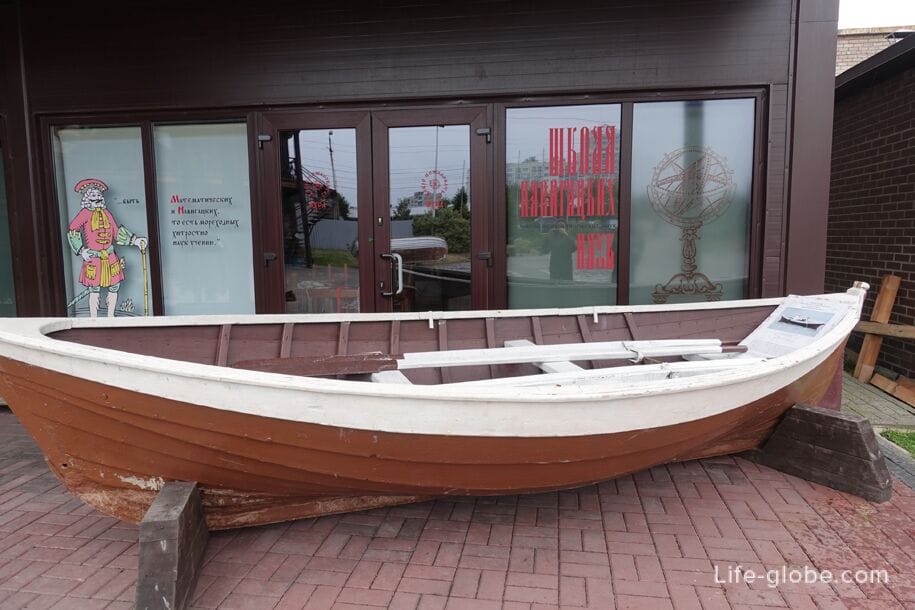
A dugout boat of the North American Indians of the eastern part of North America. The size and shape of the boats have remained unchanged over the past 10,000 years. Boats are being built and continue to be used to this day.

The black boat is block-shaped hollowed-out vessels originating from single-tree hollows made of solid wood. They can be traced in the European archaeological material from the first centuries BC. In Russia, the most ancient flagship of the block boat was found in 1947 during excavations at the Yaroslav's Yard in Novgorod and dates back to the 12th-13th centuries.
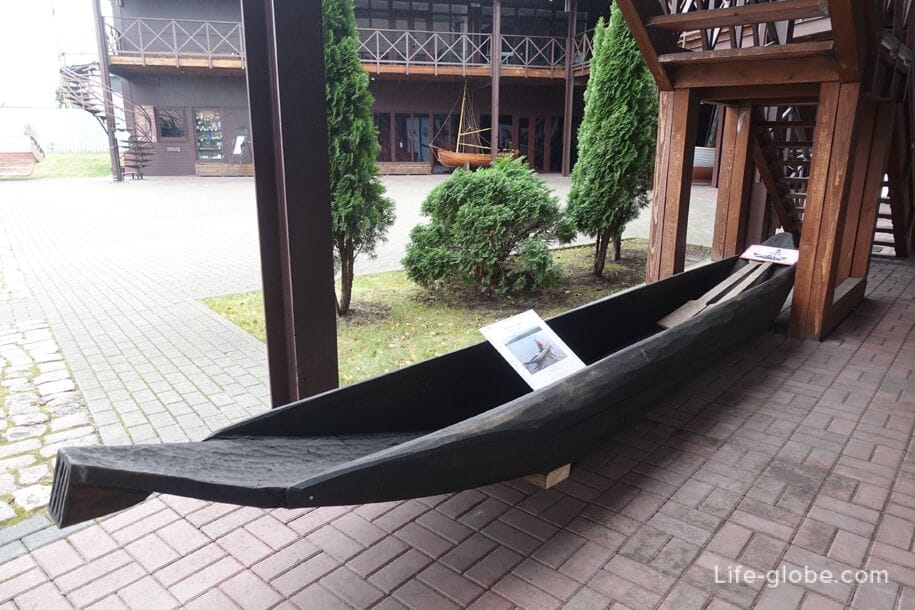
The dugout canoe (Verkhnedonsky kayak) is a traditional boat of residents of small villages and villages, which is still used for fishing today. Designed for two passengers. It is hollowed out from the solid trunk of a willow tree growing in the floodplains of the Don River.
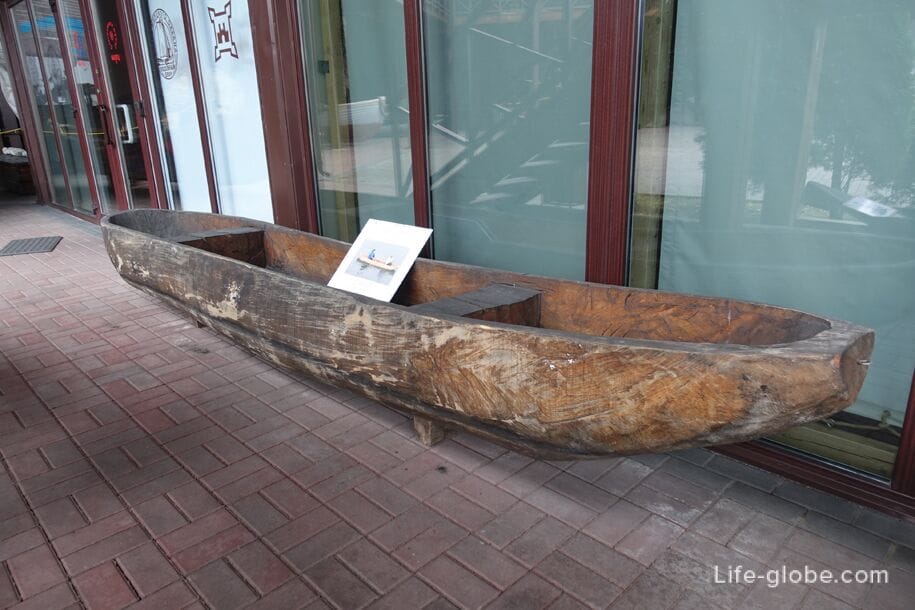
The Finnish traditional boat is a rowing boat typical of Northern Finland. It is used for coastal fishing, transportation of goods and people in the Gulf of Bothnia. This is a fast, maneuverable, light and narrow boat. Therefore, it is easy to carry it together through rapids and rifts.
When sailing on shallow, rapid rivers and in shallow waters in skerries, boats should have a minimum draft. This can be achieved by a long length, so this type of boat is traditionally long.

The Dedinovsky shuttle is a traditional river vessel for residents of the Priok villages of the southeastern Moscow region. The canoe is named after the village of Dedinovo on the Oka River. It has been known since the 17th century, and is still used for fishing and moving along the rivers of the Oka basin. The size of the canoes and the choice of materials depend on the nature of the fishing and their owners.
Lighter and smaller (4-5 meters) linden canoes are used for coastal fishing and in overgrown backwaters. Heavier boats from Vetla are 9-10 meters long and are used in open water.

The frame birch bark boat is a rowing boat of the peoples of the northern and northwestern part of the European territory of Russia who lived along the shores of the Northern Dvina, Pechora, Vychegda and their tributaries.
Presumably, since the Late Mesolithic (III millennium BC) and up to the 17th and 18th centuries, it was used as a fast means of transportation up and down the river and in coastal sea navigation.
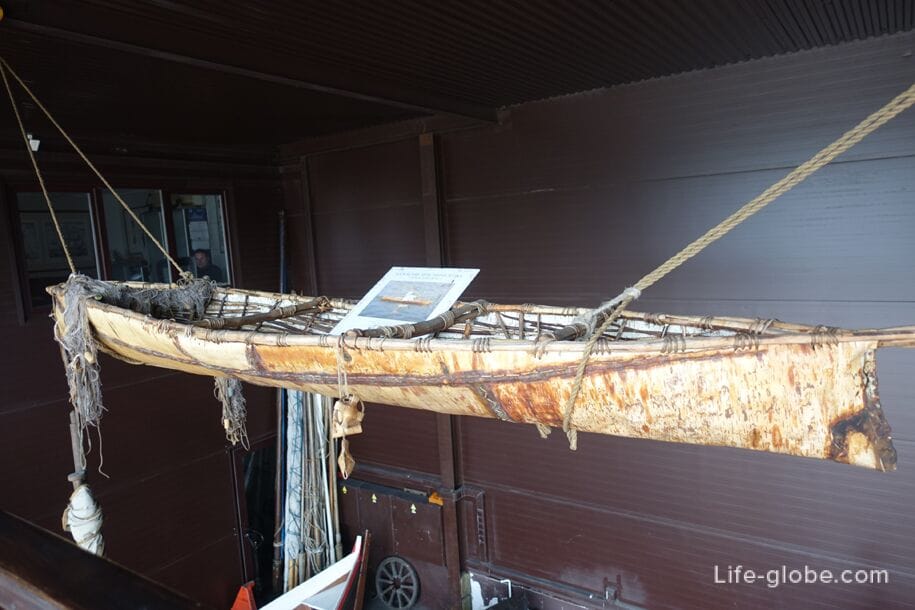
Kemsky karbas (podezdok) - was used by the pomors of the Karelian coast of the White Sea of the Kemsky district of the Arkhangelsk province as a coastal vessel for trips to toni (fishing areas), delivery of cargo, people and passengers to the cruise ships of the Northern Shipping Partnership in closed and coastal waters. It was allowed to be used on large lakes and transported by hand through "taibols" (crossings between reservoirs).
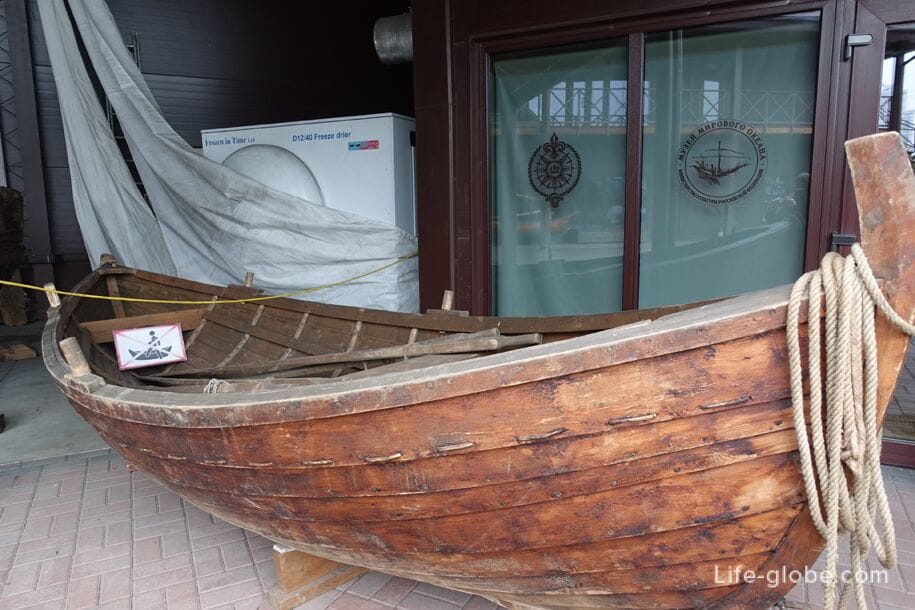
A fragment of the stern of the ship Reizenkan, discovered in 2014 on the Baltic spit. East Prussia, 1920s, oak.
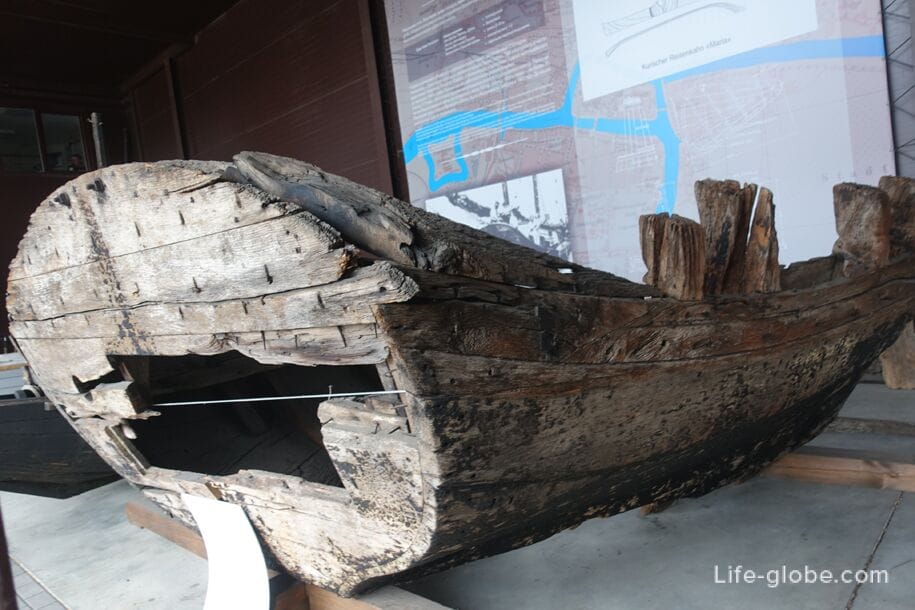
Budarka Astrakhan
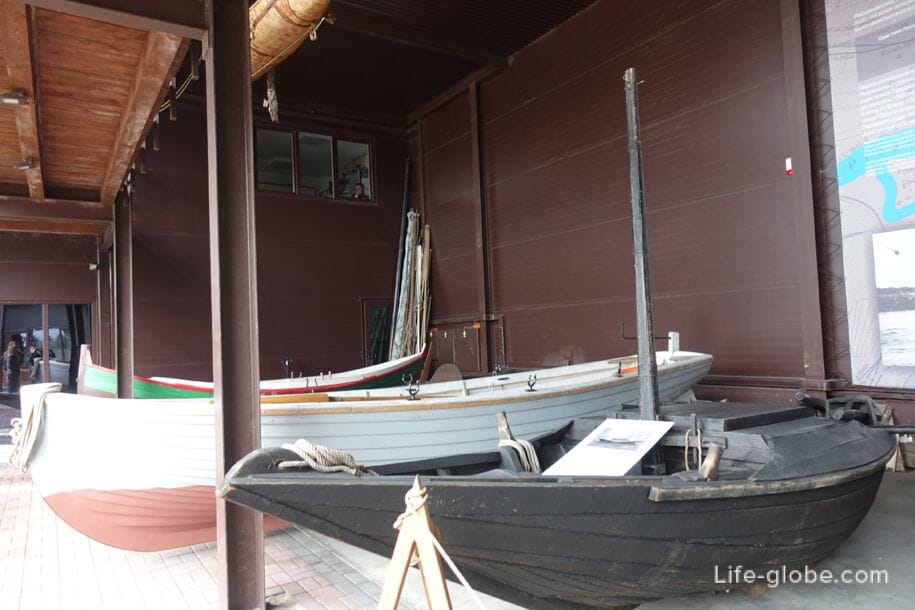
Fofan. The boat project was developed in 1990 by the St. Petersburg shipbuilder Fan der Flit to participate in the competition for the best boat for folk rowing. Since then, the Fofan has been built serially and has proven itself to be a reliable and safe boat for recreation on the water with excellent seaworthiness.
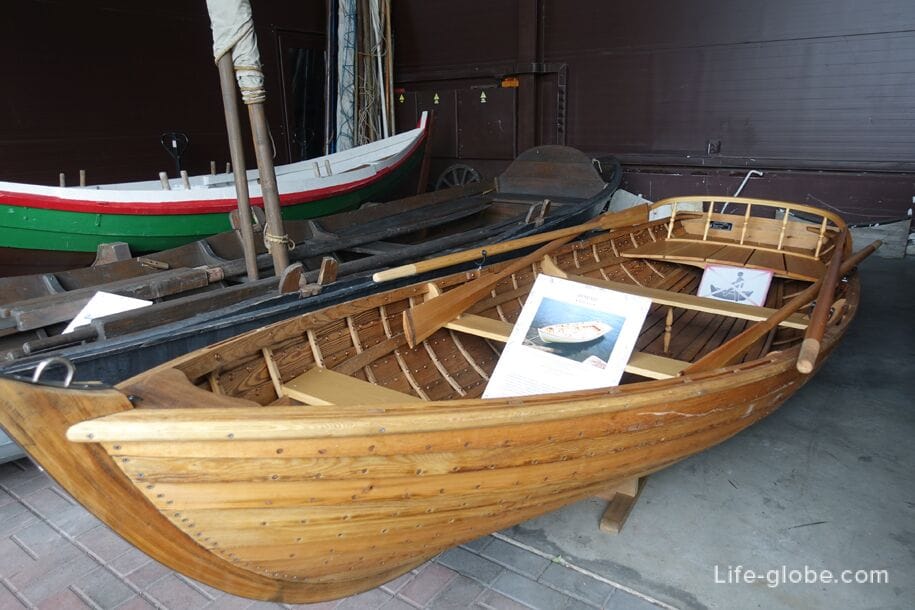
Peter the Great's Vereyka (working boat, skiff) is a type of small narrow boat traditionally used in England to transport passengers across rivers or harbor waters. It was also used as a pleasure boat. It has a light body and good speed on oars and under sail.
Peter the Great appreciated these boats during his stay in England with the Great Embassy. Later, during the construction of St. Petersburg, such a boat was made for the Russian tsar, which he used for traveling along rivers when there were no bridges and roads yet.
These boats were widely used during the Northern War of 1700-1721.
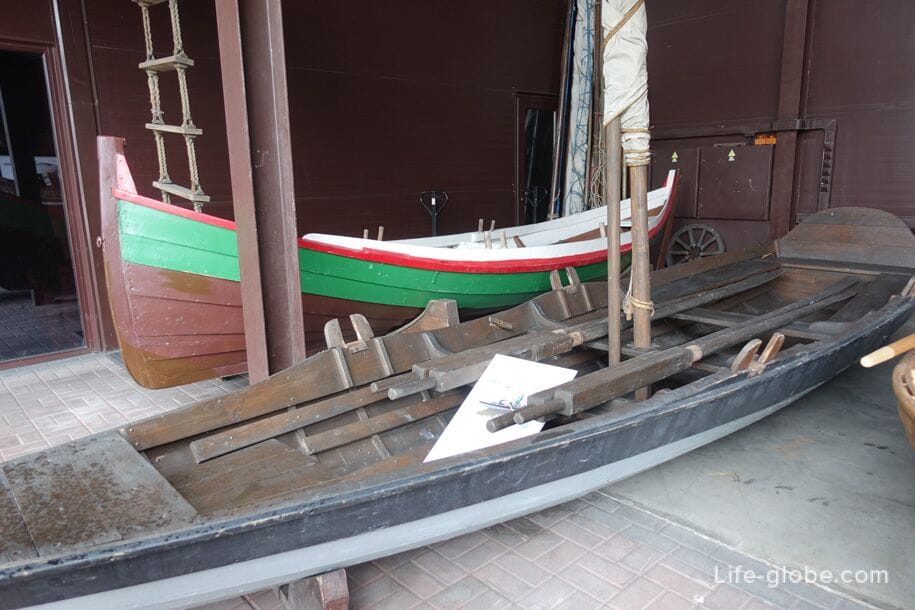
Norlanbot is a traditional boat of the northern provinces of Norway, has a large geographical distribution - from Bindal in the south to the border with Russia in the northeast. Such boats were used mainly for fishing and coastal navigation. Preferred materials: pine, spruce.
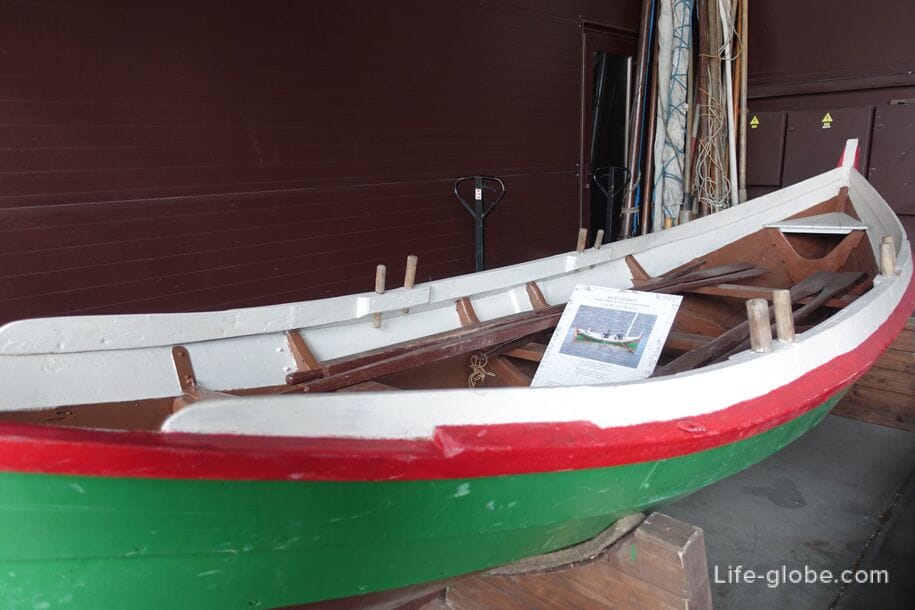
The German pleasure boat is a two-person boat used for short walks or transporting people. Such boats could be found on numerous reservoirs of Konigsberg. In addition to oars, these boats were equipped with a small sail.
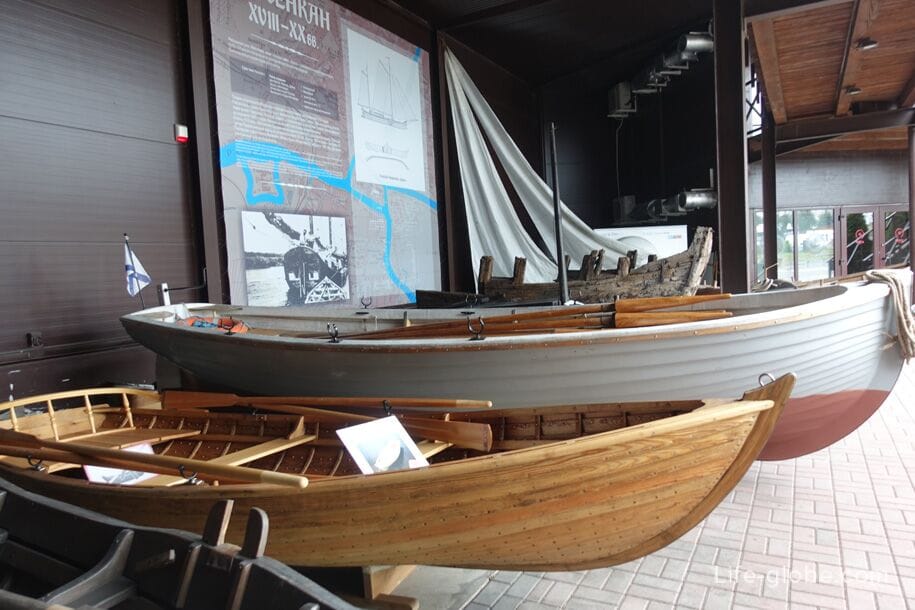
The enclosed space of the Lodeyniy Dvor complex, located on the second floor, consists of collections of seaworthy items; naval hats from 17 countries of the world (Evgeny Grishkovets collection); naval weapons (swords, knives, etc.); samples of military naval uniforms of the modern fleet of the Russian Federation.

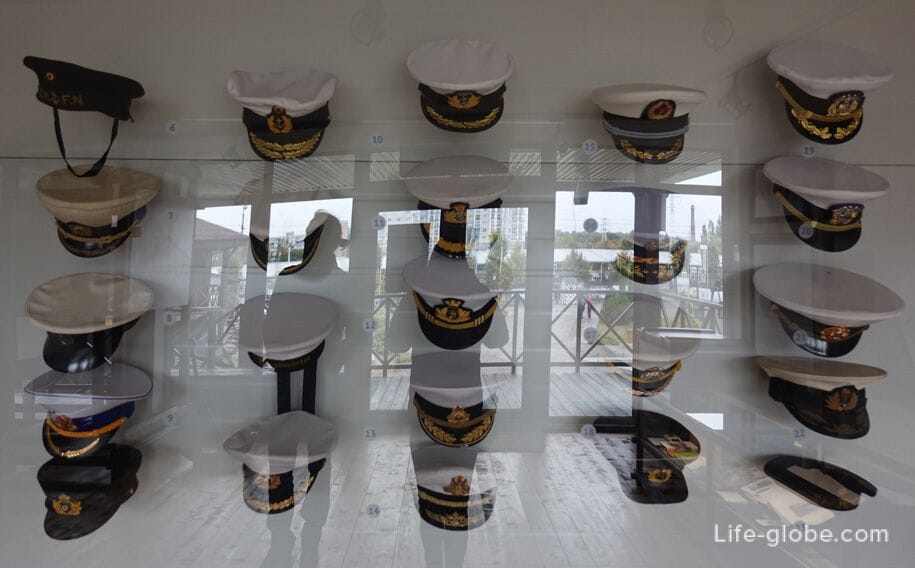

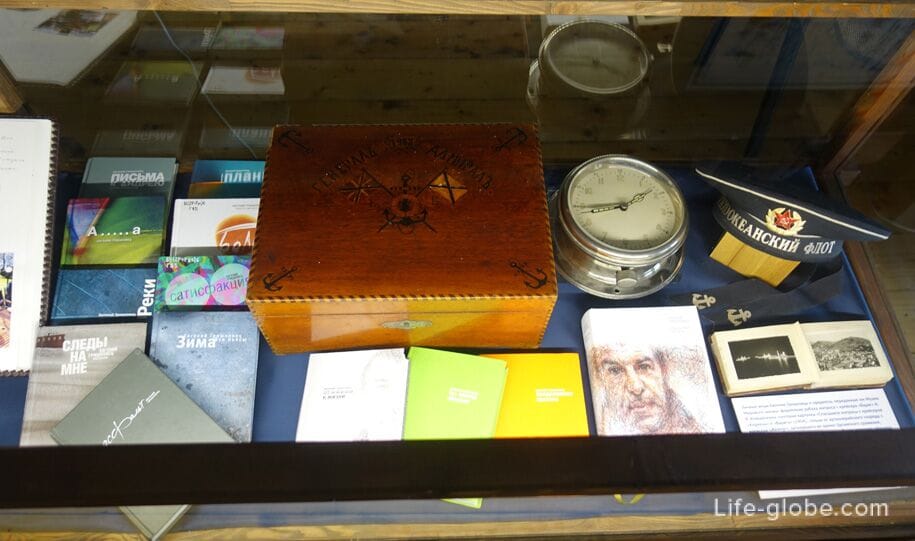
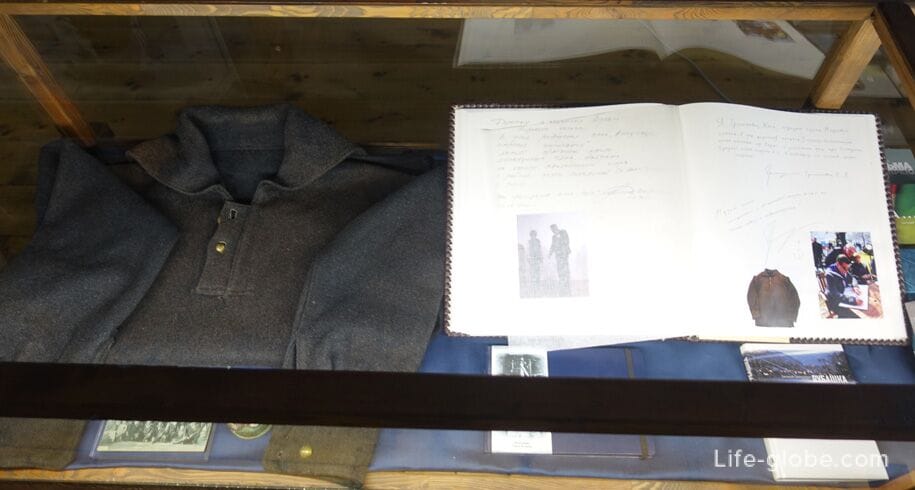
Photo of the territory of the historical and cultural center "Ship Resurrection"
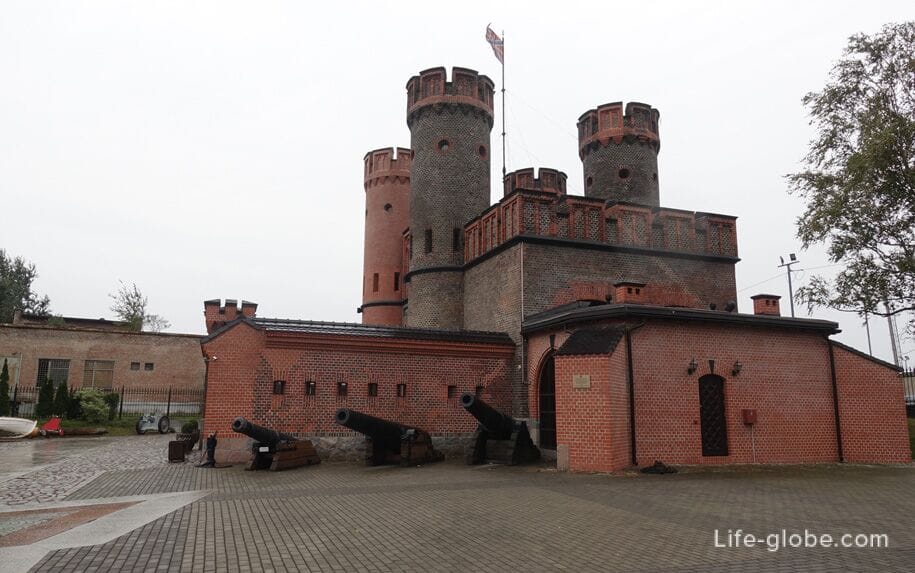

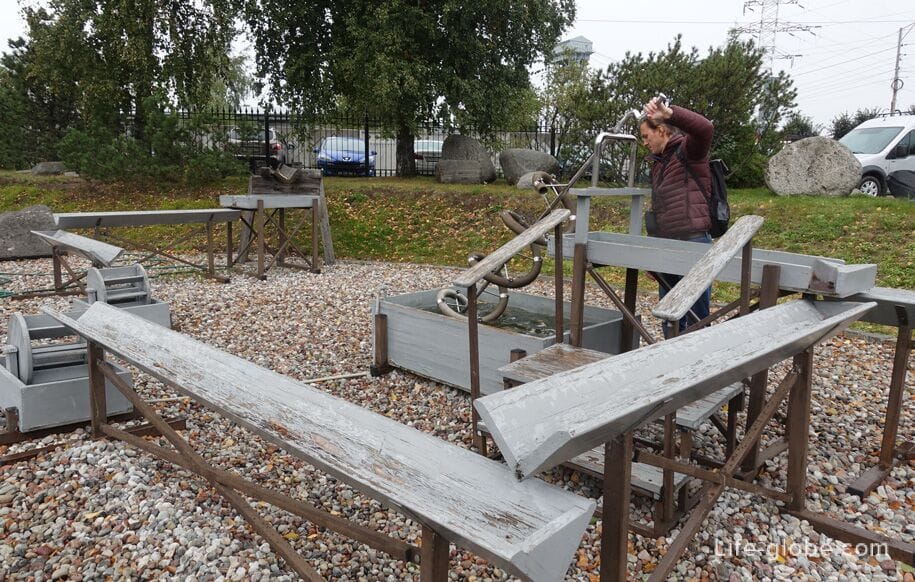
At the historical and cultural center "Ship Resurrection" there is a circle (weekend club), where classes are held for children, telling about the maritime business and traditions. Children draw on blackboards, write with pens, study geography, the history of maritime affairs, mathematics from old textbooks, study compass, maps, sea signals, flags, learn to knit sea knots, etc.
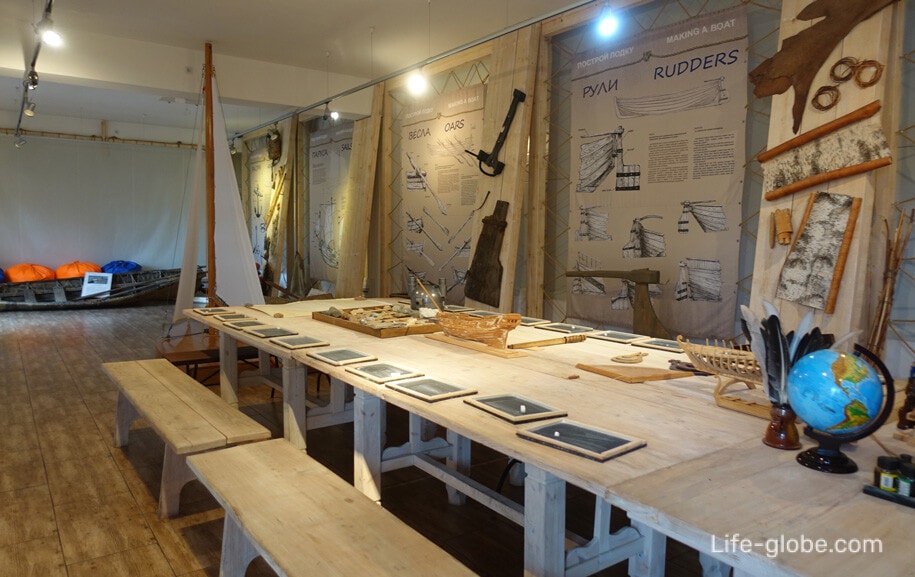
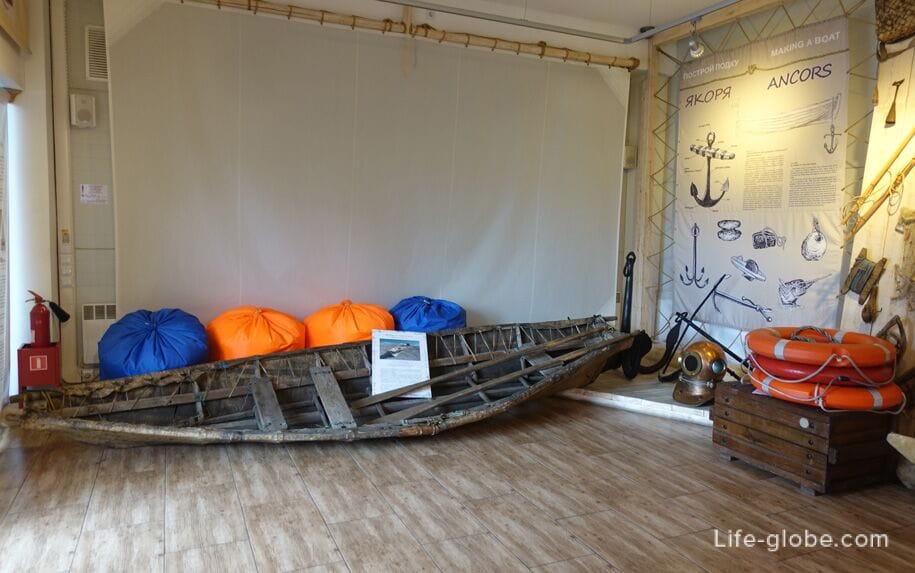
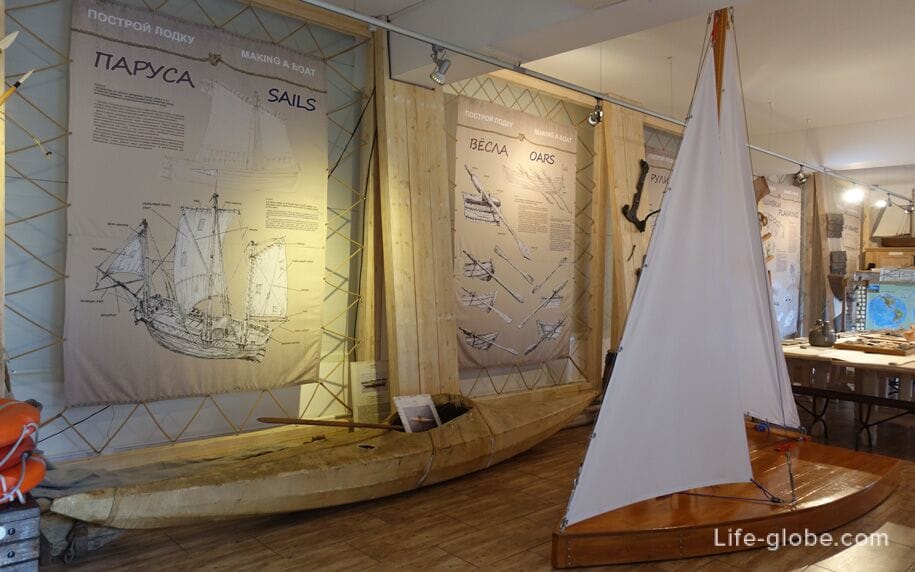
The address of the historical and cultural center "Ship Resurrection": the museum is located in the Friedrichsburg Gate and on the adjacent territory, at the address: 39 Portovaya Street, Kaliningrad, on the south side of the Pregolya River, near the Two-tier Bridge and the Peter the Great Embankment.
You can find out the cost, opening hours of the museum, as well as about events held on the territory of the museum, both at the ticket office located directly on the territory of the museum, and on the official website.
The official website of the historical and cultural center "Ship Resurrection": the museum in the Friedrichsburg Gate is a branch of the Museum of the World Ocean, website: world-ocean.